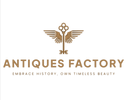|
Quantity
|
Out of stock
|
||
|
|
|||
In 1852, Robert Barclay Haviland joined his brothers. D. G. & D. Haviland became Haviland and Company. Robert sent his son Charles Field Haviland to Limoges to work with his uncle David. Charles married into the Alluaud family, owners of the Casseaux works. When Charles assumed control of the factory, its whiteware was marked “CFH.”
The American Civil War caused the demand for Haviland china to fall. The New York office closed in 1863. David Haviland’s sons Charles Edward and Theodore joined the firm in 1864. A year later, Theodore came to the United States to market Haviland. He had great success. In 1865, the Limoges factory was expanded. Theodore’s brother Charles Edward became the factory’s manager. By 1878, the Haviland factory was the largest in the Limousin District. When David died in 1879, Charles Edward and Theodore assumed control.
In 1875, Charles and Theodore Haviland established Auteuil Studio in Paris. Felix Bracquemond, a famous French engraver, directed the studio. The studio attracted some of the most famous French artists and decorators. In 1879, Haviland and Company produced a White House dinnerware service for President Rutherford B. Hayes that featured flora and fauna drawings by Theodore Davis, an illustrator for Harper’s Weekly. Haviland also produced White House services for Abraham Lincoln and William McKinley.
Theodore eventually found it impossible to work under his brother Charles. On December 31, 1891, Haviland and Company was dissolved.
Charles Edward and his son George established a new company on January 1, 1892, retaining the Haviland and Company name.
Theodore opened a new factory in 1893 under the brand name Theodore Haviland Company. His son William joined the first in 1903.
Charles Edward’s Haviland and Company prospered until Charles’ death in 1922. The Great Depression caused the demand for fine porcelain to plummet. Haviland and Company ceased production in 1931.
Exceptional antique century
In 1936, William Haviland’s son Theodore established a porcelain factory in the United States, using the name Theodore Haviland. In 1941, William and Theodore bought all of the “designs, trademarks, and rights” of the former Haviland and Company. They recombined the two companies under the original name of Haviland and Company.
Theodore’s brothers Harold and Frederick joined the company in the late 1950s. In 1961, Haviland introduced a new line of giftware. The family sold its interests in Haviland Company in 1981.
Haviland & Company continues to manufacture porcelain. In addition, its lines include crystal, giftware, and silverware.






























